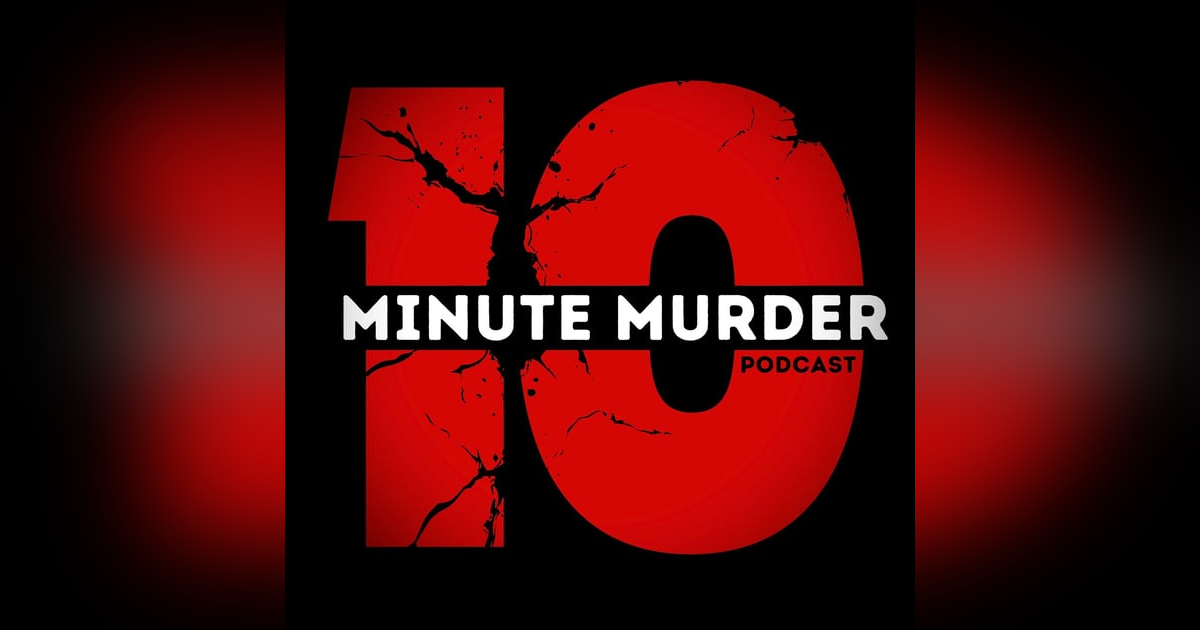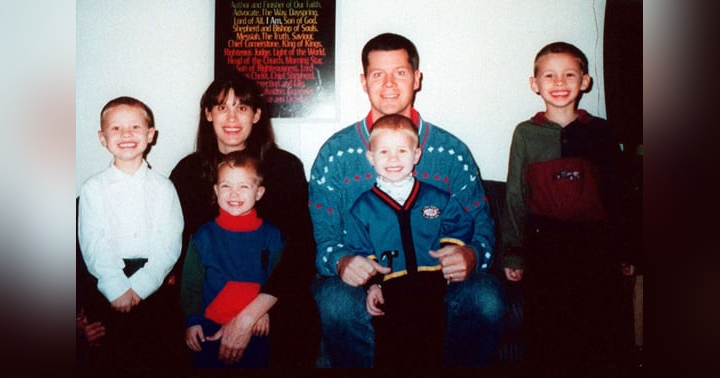Sex, Fame, and Murder: The Bob Crane Story

The 1960s. Every channel on the TV had some sort of cheesy comedy ripe with ill-timed laugh tracks and poorly executed jokes. But there was one comedy series out there that dared to stand out from the rest. Hogan’s Heroes was a CBS series loosely based on popular World War II movies like The Great Escape during which a colorful cast of American prisoners of war would constantly outsmart the leaders of the Third Reich.
It may sound like there wouldn’t be that far a series like this could go, but the writers and producers managed to string this concept out for a whopping six seasons, making almost everyone involved in the show a huge success.
But very few of them were quite as successful as the show’s top dog: Bob Crane. Bob played Colonel Robert Hogan, the leader of this ragtag team of inmates who was always popular with the ladies.
And for Bob Crane, playing Colonel Robert Hogan was the highlight of his career.
Bob had first started out in the military and then as a radio host on The Bob Crane Show. There he mingled with celebrities and rubbed shoulders with producers, which got him interviews with some of the top names in the industry at the time. Marilyn Monroe, Bob Hope and Charlton Heston all appeared on Bob’s show, but it was when he interviewed TV writer Carl Reiner that his luck really turned around.
Carl Reiner offered Bob Crane a part on The Dick Van Dyke Show. It was only a one off deal where Bob would play the role of a cheating husband, but it did get Bob a foot in the door. After proving that he had the acting skills to do the job, Bob was offered a permanent role playing a dentist on The Donna Reed Show.
It was then, with his fame building and his star rising, that Bob’s agent came across the script for Hogan’s Heroes and passed it on to Bob. Bob initially hated the script. Up until then he’d strictly been involved in comedic acting roles and he had no intentions of acting in a serious drama based on serious, World history events like the World Wars and the Third Reich.
Bob’s son Robert, later writing about his father, said that his agent then managed to turn Bob’s perception of the series around. “Bob, what are you talking about?” he is quoted as saying. “This is a comedy. These are the funny Nazis.”
Many would forgive Bob for being confused about the tone of the series. World War II had only ended twenty years before he was sitting there, reading the manuscript for Hogan’s Heroes. For most people, the war, and the hardships that had come with it, were still within living memory and that was doubly true for the cast. Many of them were Jewish. Some of them had lost friends and loved ones during the war and the prison camps. Some of them had been real prisoners of war themselves and still had the tattoos to prove it.
It was a real concern that making a light-hearted, comedic series about such a tragic and difficult time in everyone’s life was too much too soon, but Bob and his other cast members took a huge leap of faith.
And it paid off.
Hogan’s Heroes was an overnight sensation and Bob Crane became a bonafide Hollywood star.
Money, fame and notoriety gave Bob everything he wanted right at his fingertips and it allowed him to indulge in his biggest vice: women. Bob absolutely loved women. So much so that looking at it from today’s perspective, you could even say that he was a sex addict.
Bob collected pictures of women, especially the ones that he had had sexual relationships with. He was already married to his high school sweetheart, Anne Terzian, and had had three children with her, but that didn’t stop him. With his newfound fame and success, women began throwing themselves at Bob and Bob found that he couldn’t say no. He stored his growing pile of nude pictures and porngraphy in his home, in his car and in his changing room at work, where he was known to take them out and show them to his co-stars.
“There were no drugs, no coercion, none of that,” his son Robert later explained. “Women just liked him, or found him handsome, or whatever it was. They would hook up.”
But the truth was that Bob and these women were doing a bit more than just that.
Along the way Bob had met John Henry Carpenter and that was that. John was a video-equipment salesman who worked at Sony and he opened Bob’s eyes to the world of homemade pornography. After that, Bob was hooked. He purchased anything and everything that he would need to start making his own videos to add to his growing collection. Bob and John also often worked together. They would go out on the town, using Bob’s new fame to attract beautiful women, and then they would take them back to a room, where they would film themselves in the act long into the night.
Bob kept all of these videos and paraded his conquests to those around him, but there are people who claim that making pornographic films was not actually Bob’s main goal in all of this. Carol Ford later wrote in a biography about Bob: “As far as the amateur pornography, that was a small part of a bigger pie, you might say. Bob was chronicling and writing down and filming every single thing in his life. So when you look at it in the grand scheme of things, it’s just a small slice.”
But collecting pornography and sharing pictures of women that he had slept with was about to catch up with Bob.
“He made some bad moves,” Robert later explained. “He collected photographs of women and put together these books - ‘Oh, here’s Sally from Jacksonville, Florida’ - and then he started showing them to people. He was doing a very bad Disney movie called Superdad, playing an all-American character who cares about his daughter running off with some unsavory type, but at Disney studios, in Burbank, he’s on the set showing photographs of women that he’s been with to people on the crew. That hurt him because the executives found out. People talk, and it started getting in publications like the National Enquirer.”
That was it then. The cat was out of the bag and Bob’s star began to diminish.
But far from realizing what was happening to him, Bob was enjoying himself. He even took his then twenty-one-year-old son Robert to the 1972 premiere of Deep Throat. “He just loved it because he was meeting all these porn stars,” Robert later wrote.
But Bob Crane now had a sullied reputation and Hogan’s Heroes, the very show that had brought him to fame in the first place, had just aired its final episode. Bob was now officially out of work and instead of landing another gig in another hit Hollywood series, he found himself working the dinner-theater circuit.
Cameras and big studio buildings with hundreds of cast and crew had been replaced with live performances in restaurants for the average citizen.
He then moved to Phoenix, where he bought the rights to and performed a romantic comedy play called Beginner’s Luck in places like the Windmill. His marriage with Anne Terzin was long dead and buried and now his second marriage with Patricia Olson looked like it was about to come crashing down as well.
He’d been a star. He’d been rich and famous and he’d had it all, but somehow it had all slipped through his fingers. Ahead of him laid a life of grinding and clambering to get back up to the heights he’d once flown to and Bob knew that in order to do that, he needed to reevaluate his life.
Just before his birthday, Bob called his son Robert and told him his plan. “He was two weeks shy of 50,” Robert wrote. “He says, ‘I am making changes. I’m divorcing Patti.’ He wanted to lose people like John Carpenter, who had become a pain in the butt. He wanted a clean slate… They had a breakup, of sorts. Carpenter lost it. He was being rejected, he was being spurned like a lover. There are eyewitnesses that night at a club in Scottsdale that said they had an argument, John and my dad.”
What Robert was referring to was an incident that happened right before tragedy would strike.
In June 1978, Bob’s co-star Victoria Ann Berry walked into Bob’s apartment after he’d failed to show up for a lunch meeting. There she found him beaten, his face an unrecognizable mess and his bedsheets sodden with blood. Bob was dead and within hours his son Robert was being escorted onto the scene of his father’s murder to help with the investigation.
The Scottsdale Police Department didn’t actually have a homicide unit at the time, a fact that Robert would later say greatly hindered the investigation. “Vaughn,” Bob’s business manager, “Goldstein,” his lawyer, “And I walked through the apartment, examining, touching, handling items in plain view of Vassall,” the lead detective in the case. “We added our fingerprints, footprints, and hair samples to an already contaminated, lackadaisically investigated, casually considered… murder scene.”
Detective Barry Vassall would later deny that Bob’s crime scene had been handled incorrectly, especially because he believed that they had their man: John Carpenter. The two of them had noticeably fought in the days before the murder and there had been no signs of forced entry at the scene, suggesting that Bob had known his attacker.
“We found blood in (Carpenter’s) rental car and on the passenger door,” Barry later said. “It was Crane’s blood type. Nobody else who handled the car had the same blood type as Crane.” DNA technology was severely lacking at the time, so blood typing was as far as the investigators could go in terms of collecting forensic evidence.
But it wasn’t enough to persuade the county attorney to prosecute John. It wasn’t until 12 years later that John was charged with the murder of Bob Crane and by then, most of the physical evidence had already been destroyed. The last of the forensic samples taken from the scene had also been destroyed in the attempt to get a more conclusive DNA profile and those attempts had been in vain.
The prosecution had very little evidence to prove that John Carpenter had killed Bob Crane and he was acquitted. He actually died four years later and took anything that he knew with him to the grave.
Robert, who initially believed that John was his father’s killer, has since pointed the finger elsewhere: at his stepmother Patricia Olson. “She was in the middle of a divorce with my dad. If there’s no divorce, she keeps what she gets, and if there’s no husband, she gets the whole thing.” Robert claims that Patricia was never properly investigated and now she never will be. She died of lung cancer in 2007, also taking any secrets that she was keeping with her.
“I don’t know what else to do,” Robert said. “Carpenter’s dead. Patti’s dead. Time is just taking people away.”




